What to buy in Hawaii: Authentic Gift Ideas
Jul 09, 2020
An integral part of traveling the world is shopping, and nothing speaks to your travels more than finding a genuine memento or meaningful keepsake. For those of you who visit Hawaii, the island culture is rich with options. But if you’re like me, you probably prefer something original over the conventional tee-shirt that says something like “my fill-in the blank went to Hawaii all I got was this tee-shirt.” And if that’s the case, you'll appreciate this list of what to buy in Hawaii. It is filled with gift ideas and souvenirs that have cultural relevance and authenticity.
What to buy in Hawaii?
1. Ukulele
Ukuleles are associated with music from Hawaii. They were introduced in the 19th century to Hawaii by Portuguese immigrants. The name ukulele roughly translates as “jumping feet”, referencing the quick movement of the player’s fingers.
King Kalakaua helped establish the ukulele in Hawaiian music by his passionate appreciation and support of the instrument. He incorporated it into royal performances. Ever since the instrument has become a staple symbol for Hawaiian life.
Ukulele comes in different kinds of woods and sizes. Koa ukulele is by far the most sought after and exclusive of all the woods. The most popular size is the Soprano. It is the smallest of four standard sizes (Concert, Tenor, and Baritone) and is known for its bright sound commonly associated with ukulele.
2. Koa Wood Products
 Today local craftspeople use Koa wood to make all kinds of gifts and souvenirs. From pens and bowls to bottle stoppers and jewelry, Koa wood has found its way into multiple gift categories. Koa wood is revered and highly regarded by the Hawaiian people because of its rich history and high monetary value. Koa only grows in Hawaii carrying with it a sense of exclusivity and brand unmatched by any other type of gift or product. Koa was the go-to wood for ancient Hawaiian warriors. They used Koa to build everything from canoes and paddles to spears to clubs. Koa is deep with historic value.
Today local craftspeople use Koa wood to make all kinds of gifts and souvenirs. From pens and bowls to bottle stoppers and jewelry, Koa wood has found its way into multiple gift categories. Koa wood is revered and highly regarded by the Hawaiian people because of its rich history and high monetary value. Koa only grows in Hawaii carrying with it a sense of exclusivity and brand unmatched by any other type of gift or product. Koa was the go-to wood for ancient Hawaiian warriors. They used Koa to build everything from canoes and paddles to spears to clubs. Koa is deep with historic value.
Koa wood purchases are more than transactional, they are viewed as investments. Koa bowls and vessels are regarded as heirloom products and have been known to be handed down for generations.
3. Jewelry Inspired by Hawaii
Island jewelry offers the opportunity to own and carries a symbol of paradise with you. Whether it’s traditional Hawaiian gold jewelry, contemporary accessories, or simply artisan creations, there are jewelry options for everyone’s taste. The most popular pieces are those that are emblematic of island culture. Examples of that would include figurative jewelry representing the honored Honu or Manta Ray. Flowers like the Plumeria and interpretive jewelry designs that reflect waves and waterfalls are also popular.
you. Whether it’s traditional Hawaiian gold jewelry, contemporary accessories, or simply artisan creations, there are jewelry options for everyone’s taste. The most popular pieces are those that are emblematic of island culture. Examples of that would include figurative jewelry representing the honored Honu or Manta Ray. Flowers like the Plumeria and interpretive jewelry designs that reflect waves and waterfalls are also popular.
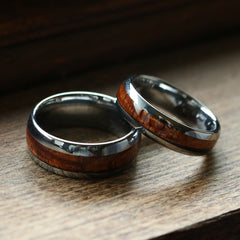 But perhaps the biggest trend in Hawaiian jewelry is the Koa wood ring. Being a symbol of strength, romance, and commitment, the Koa ring has become an alternative to the traditional wedding band. Packed with deep meaning, beauty, and representing the foundation of what makes a relationship successful, the Koa Wood ring has gained popularity in recent years.
But perhaps the biggest trend in Hawaiian jewelry is the Koa wood ring. Being a symbol of strength, romance, and commitment, the Koa ring has become an alternative to the traditional wedding band. Packed with deep meaning, beauty, and representing the foundation of what makes a relationship successful, the Koa Wood ring has gained popularity in recent years.
4. Aloha shirt
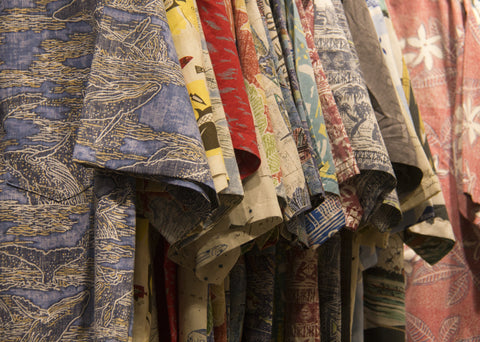
The Aloha shirt got its start during the 1930s when celebrities and athletes took favor to the casual wear. In their attempt to emulate these early influencers Americans too were adopting these free-spirited floral designs. Brand endorsements and advertisements from entertainers like Bing Crosby, and surfer Duke Kahanamoku further inspired the purchasing of those shirts. By the 60s the shirt had become universal as Elvis fashioned his appreciation for the style in his movies.
Today, Aloha wear is as popular as ever and continues to expand well beyond just a type of shirt. It is has come to symbolize the Hawaiian lifestyle with its hula dancing figures or flower packed prints. Designs have expanded to Women’s wear and children’s clothes.
Interesting Fact: In 1962, the Hawaiian Fashion Guild promoted Aloha shirts as acceptable workplace attire. This resulted in “Aloha Friday”, allowing men to wear Aloha shirts in the workplace. This custom spread and Aloha Fridays inspired what is now globally known Casual Fridays at the workplace.
There are several Aloha shirt makers, below are some of my favorites:
- Reyn Spooner - There is a legendary history and heritage attached to this brand. I love their island-inspired prints and patterns, and their multitude of different tailored fits.
- Western Aloha - Based on the Big Island they make true to the style and fit Western Aloha shirts, built for the Paniolo (Hawaiian Cowboy) lifestyle. I appreciate the detail, shirt construction, and tailored cut that goes into their garments.
- Kahala - Family owned, community-minded, and committed to manufacturing the majority of their collection in Hawaii. They are the oldest operating apparel company in Hawaii.
5. Macadamia Nuts
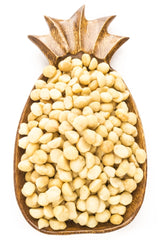 The Macadamia tree originated in Australia. It was brought to Hawaii island and first planted in 1881. By 1892 its sweet and rich flavor inspired a following and became popular. Commercial planting of Macadamia nut starting in the 1920s by the Hawaii Macadamia Nut Company. It took about 13 years before they could harvest and process their batch. By the late-1940s some of the islands sugar production companies took an interest Macadamia Nuts and eventually planted orchid of their own. Eventually, this industry grew. Today, 90% of all the macadamia nuts are harvested in Hawaii.
The Macadamia tree originated in Australia. It was brought to Hawaii island and first planted in 1881. By 1892 its sweet and rich flavor inspired a following and became popular. Commercial planting of Macadamia nut starting in the 1920s by the Hawaii Macadamia Nut Company. It took about 13 years before they could harvest and process their batch. By the late-1940s some of the islands sugar production companies took an interest Macadamia Nuts and eventually planted orchid of their own. Eventually, this industry grew. Today, 90% of all the macadamia nuts are harvested in Hawaii.
What I love most about Macadamia nuts of Hawaii is that it comes in so many forms and flavors. For example the on the Big Island, Hamakua Macadamia Nut Company makes everything from wasabi and Spam Macadamia nuts to chocolate covered and coconut glazed. And if you’re visiting Oahu, stop by at the Tropical Farms Macadamia Nuts where you can sample many of their flavors, my favorite include Maui Garlic Onion and Cinnamon. But regardless of preference, there is a Macadamia nut version for everyone.
Other local Macadamia nut resources include:
6. Lei
Perhaps one of the most recognizable symbols of Hawaii is the Lei. Leis were  originally worn by ancient Polynesians and some Asian people as part of the custom. They were often used by Native Hawaiians to signify their ranks and royalty. They are also worn as a form of honor to each other and their gods. Many customs and protocols were associated with the giving, receiving, wearing, and disposing of the lei. Today the lei is typically given as an expression of love or celebration.
originally worn by ancient Polynesians and some Asian people as part of the custom. They were often used by Native Hawaiians to signify their ranks and royalty. They are also worn as a form of honor to each other and their gods. Many customs and protocols were associated with the giving, receiving, wearing, and disposing of the lei. Today the lei is typically given as an expression of love or celebration.
Leis are typically made of fresh natural foliage such as flowers, leaves, and/or vines. The most common flowers used are plumerias, tuberose, carnations, orchids, and pikake. But other kinds of can include sea shells, fabric, and nutshells. The latter group is not as vulnerable to wilting and decay.
Lei products are easy to find in Hawaii, from the local florist and grocery store to the Walmarts and Targets of Hawaii. For new arrivals to Hawaii, there are also Lei stands at most all Hawaii airports.
7. Coffee
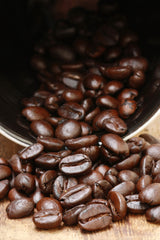 Hawaii is one of only two states that commercially grows coffee (the other state is California). Coffee beans and plant cuttings were first brought to the Hawaiian Islands in 1825. Coffee plants brought from Brazil flourished in Oahu because of the Hawaiian climate and before long, all the islands were growing coffee plants.
Hawaii is one of only two states that commercially grows coffee (the other state is California). Coffee beans and plant cuttings were first brought to the Hawaiian Islands in 1825. Coffee plants brought from Brazil flourished in Oahu because of the Hawaiian climate and before long, all the islands were growing coffee plants.
Today’s crops are descended from Brazilian and Guatemalan coffee plants. And although coffee grows throughout the islands, each has its distinctive flavor characteristics. Kona coffee is the most well known and world-renowned. It is exclusively grown on the slopes of volcanoes on the Big Island. The traditional Kona Coffee taste profile is light, sweet, and fruity with hints of spice or nuts. It is highly prized throughout the world and carries one of the biggest price tags ranging an average of $20 per pound and much more for organic.
Other notable Hawaiian region coffees include:
- Ka’u Coffee - It has a distinctive aroma, floral bouquet, and a very smooth taste.
- Puna Coffee - It is considered a full-body, heavy, with nutty overtones, taste, reminiscent of some finer mochas if roasted to a medium.
- Hamakua Coffee - Rich in flavor with a chocolaty-smooth finish
- Maui - clean, bright and sweet with tasting notes that range from sugar to milk chocolate to citrus and berry
- Kauai - rich flavor with a vivid aroma of nutty notes and sweet chocolate overtones
8. Quilt
In the early 1800s, missionaries taught Hawaiian women the art of quilting. They produced the first of what’s known as “traditional” Hawaiian quilts. By the late 1800s the pastime took off and Hawaiians began to master the art and personalize their designs. Hawaiian quilting has a distinctive style. It uses large radially symmetric appliqué patterns, reflect island culture with embroiled motifs, floral outlines, and wacky designs.
I discovered Hawaii quilting from my shop neighbor Top Stitch. They are located adjacent to the KoaWood Ranch retail store in Honokaa. Liz, the owner, sells fabric and makes Hawaiian quilts. I’ve had the privilege of watching her and colleagues masterfully craft wonderful pieces. They make impressive gifts and souvenirs that can be treasured for a lifetime.
9. Chocolate
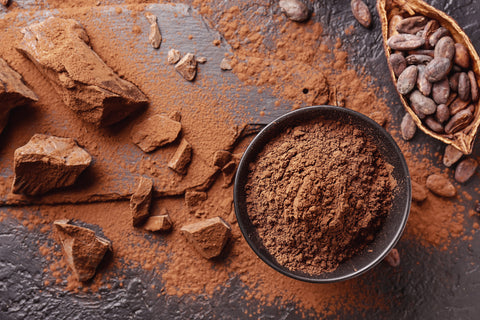
Hawaii is the only U.S. state whose climate is suitable for growing cacao, the main ingredient in chocolate. That said, the Original Hawaiian Chocolate Factory, considered the vanguard fo chocolate making in the regions, only started processing the beans form its on-site cacao orchard in 1999, creating what it claims is the state’s first single-origin chocolate in 2000. Ever since other entrepreneurs and farmers have joined in on the growing niche.
Hawaiian grown chocolate is special. The island’s cacao genetics have been fine-tuned since its arrival and Hawaii hasn’t sold out its beans to the big chocolate industry (like Hershey.) This makes the availability of its beans low, creating the rare chocolate, and increasing its demand.
Hawaiian Cacao Bean to Bar Farms and Chocolate Companies:
- Manoa
- Paauilo Chocolate
- Waialua Estate
- Hamakua Chocolate Farm
- Puna Chocolate
- Original Hawaiian Chocolate Factory
10. Hawaiian Art
Hawaiian art is plentiful throughout the islands. From traditional Hawaiian art and Polynesian influenced decor to contemporary works of blown glass and volcano paintings, Hawaii is filled with talented artisans who use a multitude of mediums to express the island’s culture and way of life. Art is a great way to bring a piece of the island memory back home and/or share it with others.
But even if you don’t make an art purchase, simply visiting Hawaii galleries and experiencing their art is an excursion and exploration worth taking.
Something That Touches Your Heart
Having lived in Hawaii for almost a decade and created a local business on the island, I’ve become familiar with visitor preferences and items that are indicative of Hawaii, its culture, and history. With the criteria of authenticity and genuineness in mind, this is a list of meaningful items for which you can't go wrong.
Ultimately, however, any souvenir or gift purchase should aim to inspire an emotional connection and/or memory of what was or is a trip of a lifetime. Whether it’s something to help you remember your experience of Hawaii or the spirit of aloha that you want to share with others, you'll get the most out of your purchase when you buy items or experiences with meaning.
I hope you find something that touches your heart.
